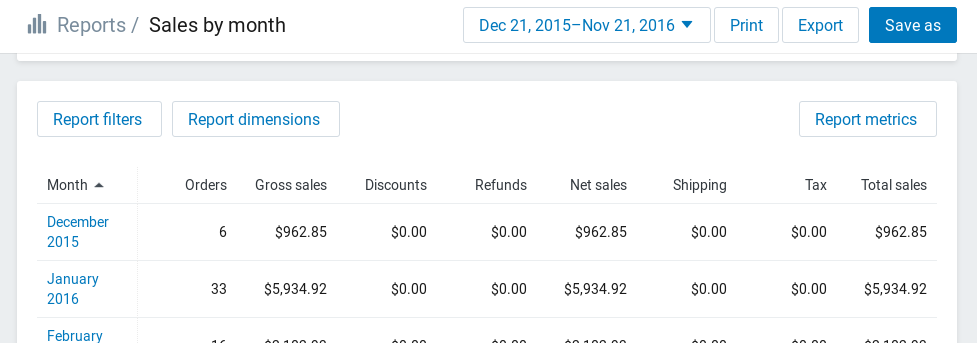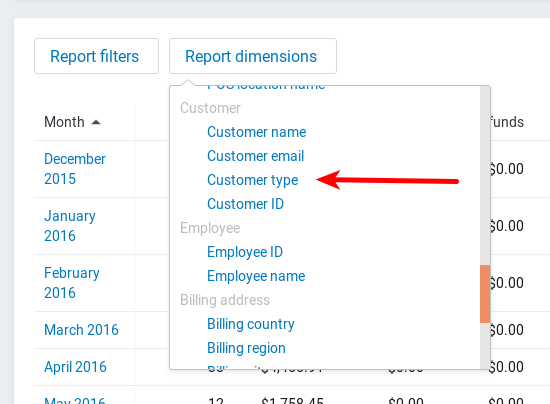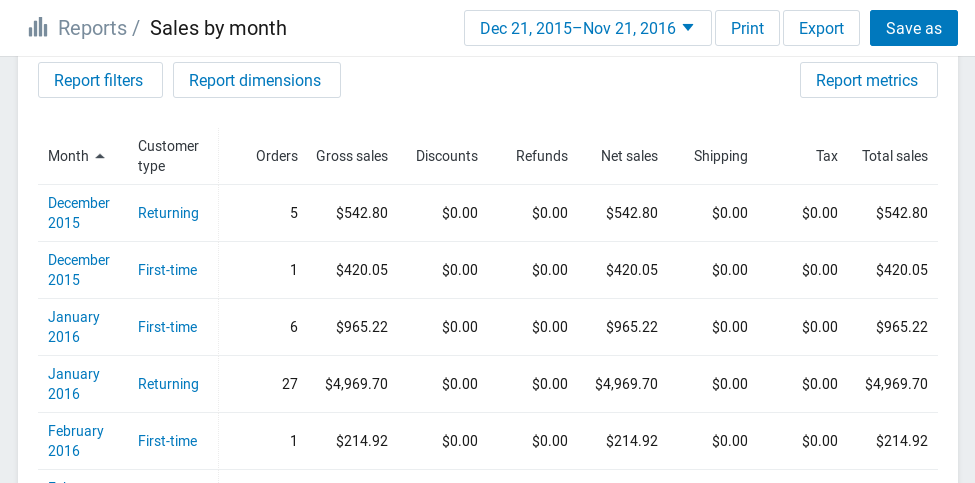Your repeat sales percentage is an important measurement to make when comparing your repeat sales and your one-time sales.
Calculating the percentage of sales that comes from repeat customers is easy if you follow these instructions.
1. Total sales by month
Shopify has a report called "Sales by month" that works great for this. You can find it in your reports area.
Run that report and make sure it includes the month that you want your repeat sales percentage for.

2. Add the customer type dimension
Now, in the same "Sales by month" report we want to add a Report Dimension called "Customer type" using the button at the top of the report.

This will segment the report so first-time and returning customers are in separate rows.

3. Divide the values
Now we just need to do some simple division. You want to divide the net sales for returning (repeat) customers by the net sales of both returning and first-time customers.
net sales of returning
----------
(net sales of returning + net sales of first-time)
In my store for January that would be:
965.22
----
(965.22 + 4969.70)
Remember to add the returning and first-time amounts on the bottom first, before dividing.
965.22
------
5934.92
0.1626... or 16.26%
What 16.26% repeat sales percentage means
The 16.26% repeat sales percentage means that my repeat customers are contributing 16.26% towards my store revenue for January. In other words, the one-time customers are contributing 83.74%.
Depending on my mix of products and industry, this might be good or it might be bad. One good thing to compare it to is your Repeat Purchase Rate.
- If your Repeat Purchase Rate is a higher percentage than your Repeat Sales Percentage, then your repeat customers are spending less than one-time customers.
- If your Repeat Purchase Rate is a lower percentage than your Repeat Sales Percentage, then your repeat customers are spending more than one-time customers.
Ideally you'd want your Repeat Sales Percentage to be higher than your Repeat Purchase Rate which would mean that repeat customers are spending more over time, boosting their Lifetime Values (CLTV).
Now you should be able to quickly calculate the Repeat Sales Percentage for your Shopify store using the Sales by Month report. You could even calculate it for various date ranges by changing the report period.
If you'd like an even faster way to calculate your repeat sales percentage, one that is 100% automated and updated as every order is placed in your store, I've added this metric to Repeat Customer Insights.
When are your best customers defecting?
Are your best customers defecting? Use Repeat Customer Insights to find out where in their lifecycle you're losing them and what you can do to win them back.